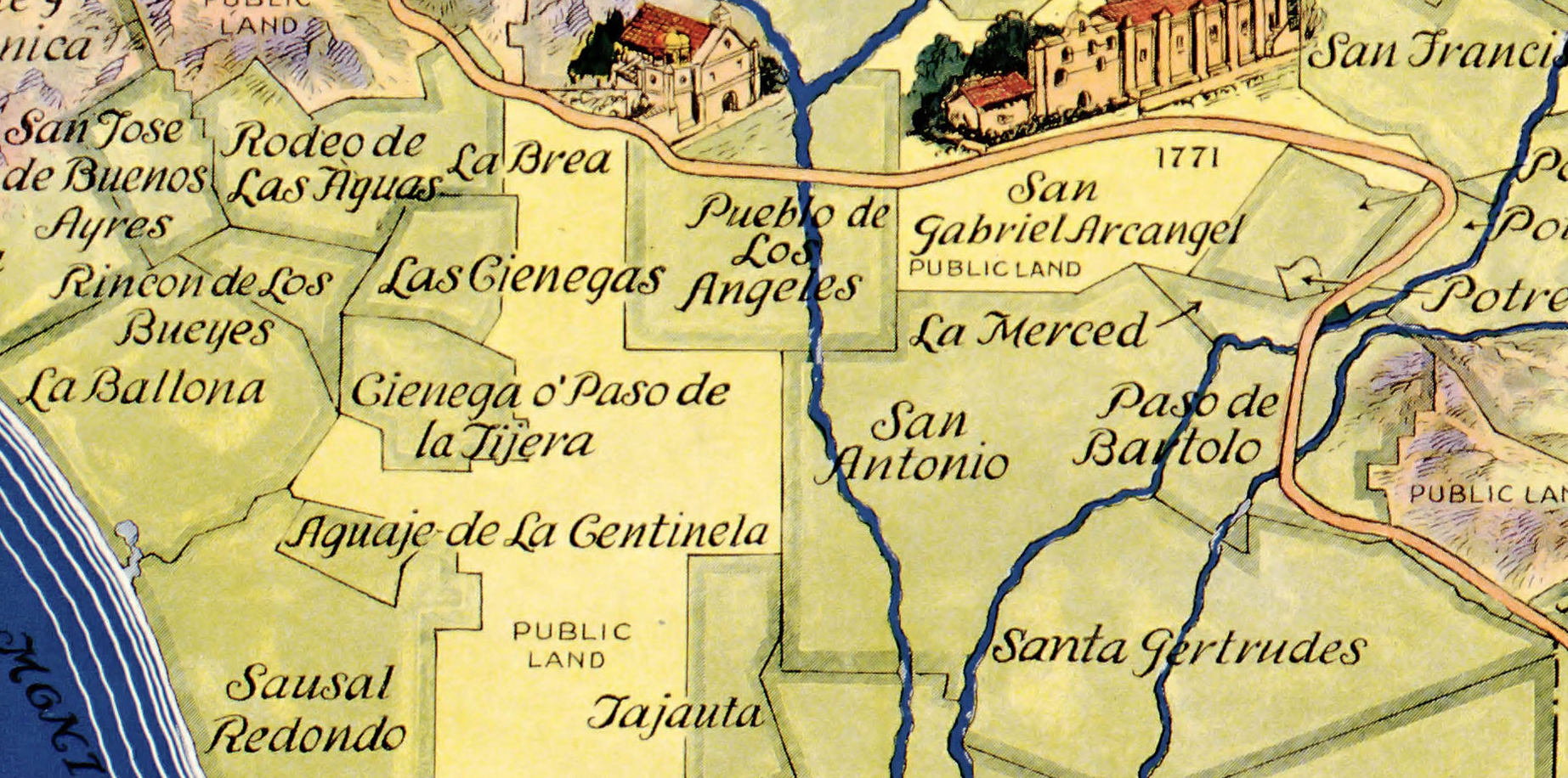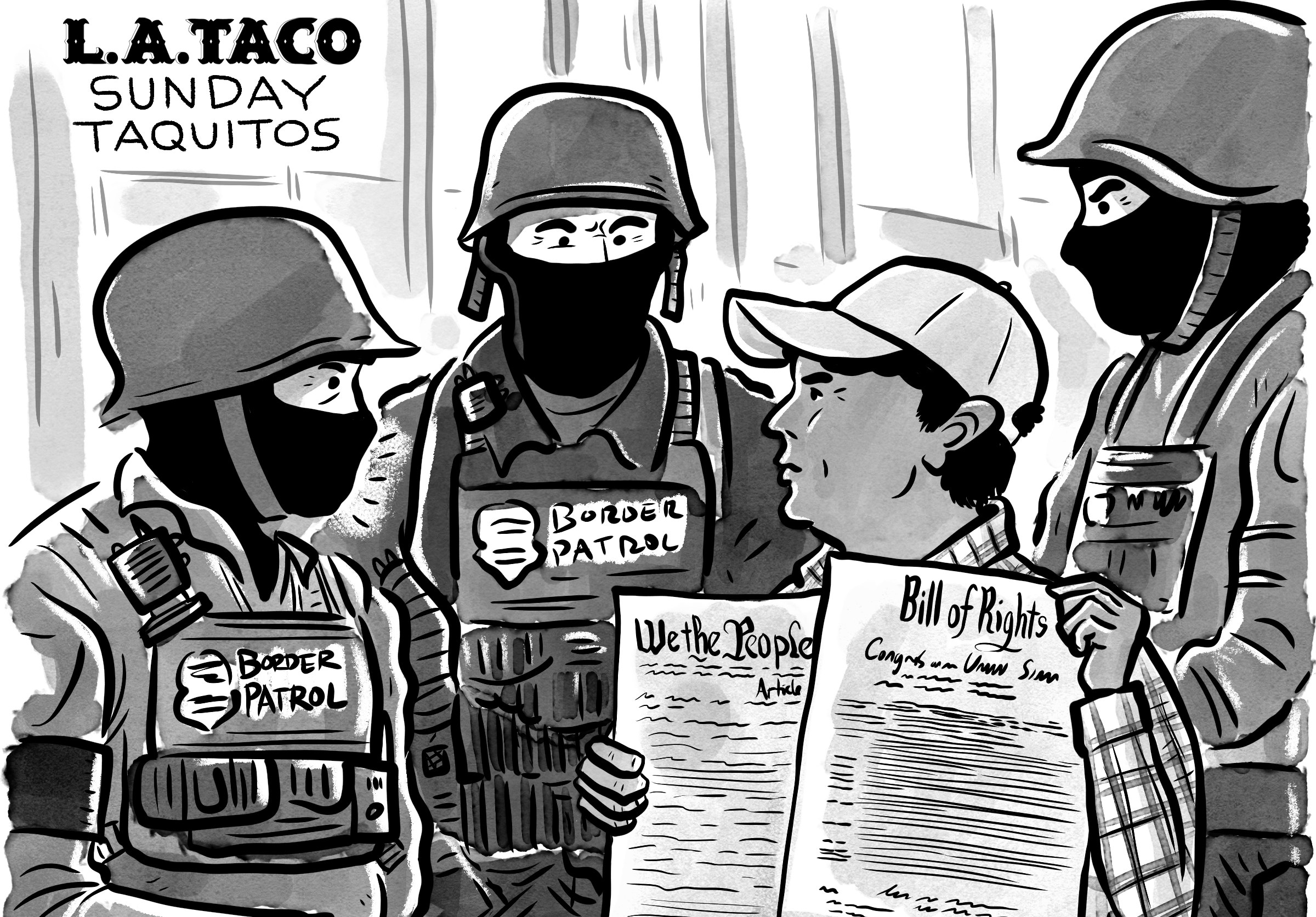
The Big Map Blog posted another interesting LA-related map today, this one a 1937 map exploring the history of the region through the old Spanish and Mexican Ranchos. Click the image for the large version, or visit the original post to explore and zoom within your browser. The Rancho system was put in place by the Spanish mission and later carried out by the Mexican Government.
Click here for a full-size version.
Cal Berkeley's history department explains further:
At the time of Spanish colonization in California, all land title was vested in the Spanish Empire by virtue of discovery. Private land claims in California emanated from the Spanish. and later Mexican, governments practice of granting sovereign lands to private individuals.
When the presidios and pueblos were being established, the commandants of the presidios and the Alcaldes of the pueblos were given the authority to grant lots of land within their jurisdiction. From these presidial and pueblo lots evolved the granting of lands outside of these jurisdictions. These grants of land are known as Rancho Grants, and were granted in order to encourage agriculture and industry, reward soldiers. and to provide for settlers who held no property. These land grants were limited to a maximum size of eleven square leagues, most were smaller and a few were larger. The Spanish government required the compliance of the following four steps for the granting of rancho lands.
- The first step was the submitting of a petition by an applicant, containing the name, religion, residence occupation, and the size of the family. Along with a land description and, at times, a map of the tract (diseno). The diseno (map) and land description were usually very vague, calling to sloughs, trees, hills, and other features which were not very permanent.
- The second step was the inquiries by officials into the availability of the land, the character of the applicant, and the posting of the petition in case another party had objections to the approval of the application.
- The third step was the ''Informe" which was usually a separate document or a note appended to the original application, stating the findings of the officials in Step Number 2. This third step usually entailed the actual grant of land or refusal of the grant of land
- The fourth and final step was the confirmation of the grant by the Viceroy. This final step made the title to the land perfect. The applicant or grantee was given possession by the Alcalde (local judge) who caused the grantee to pull up grass, throw stones, break twigs, and exclaim, "Viva el Presidente y la Nación Mexicana" (long live the President and the Mexican Nation). During the Mexican era, these four steps were also used with minor alterations.
Of the 800-plus rancho grants made, the Spanish government granted approximately 30. The remainder were granted by the Mexican Government. Read More here.







